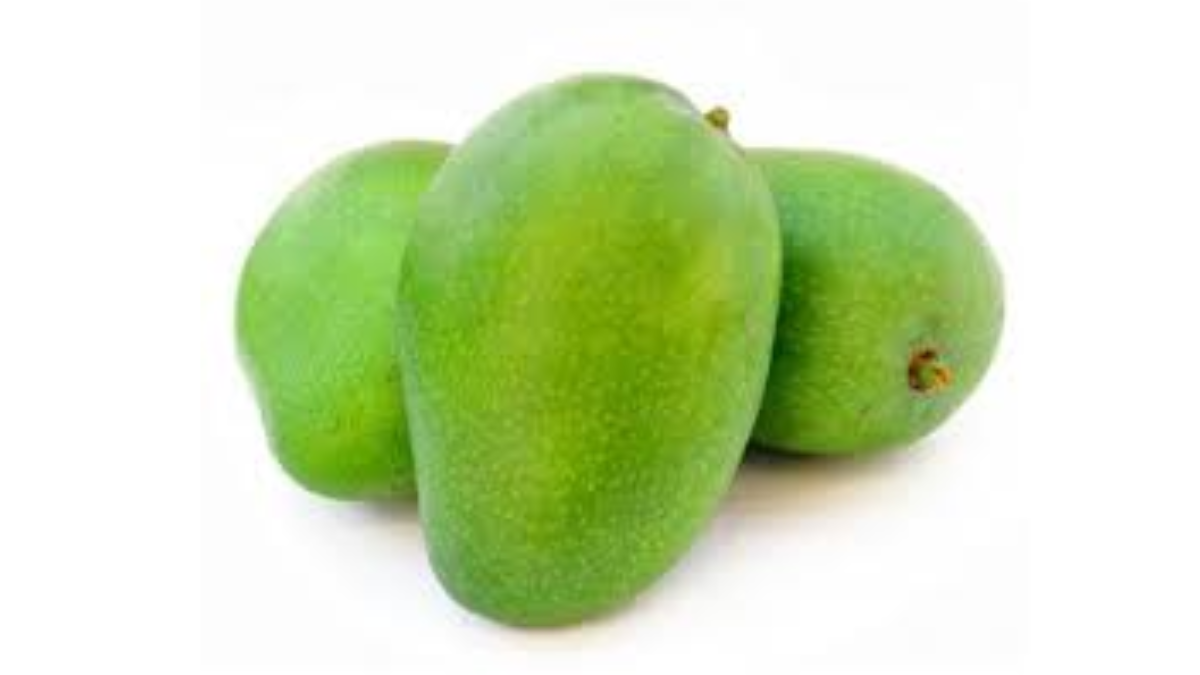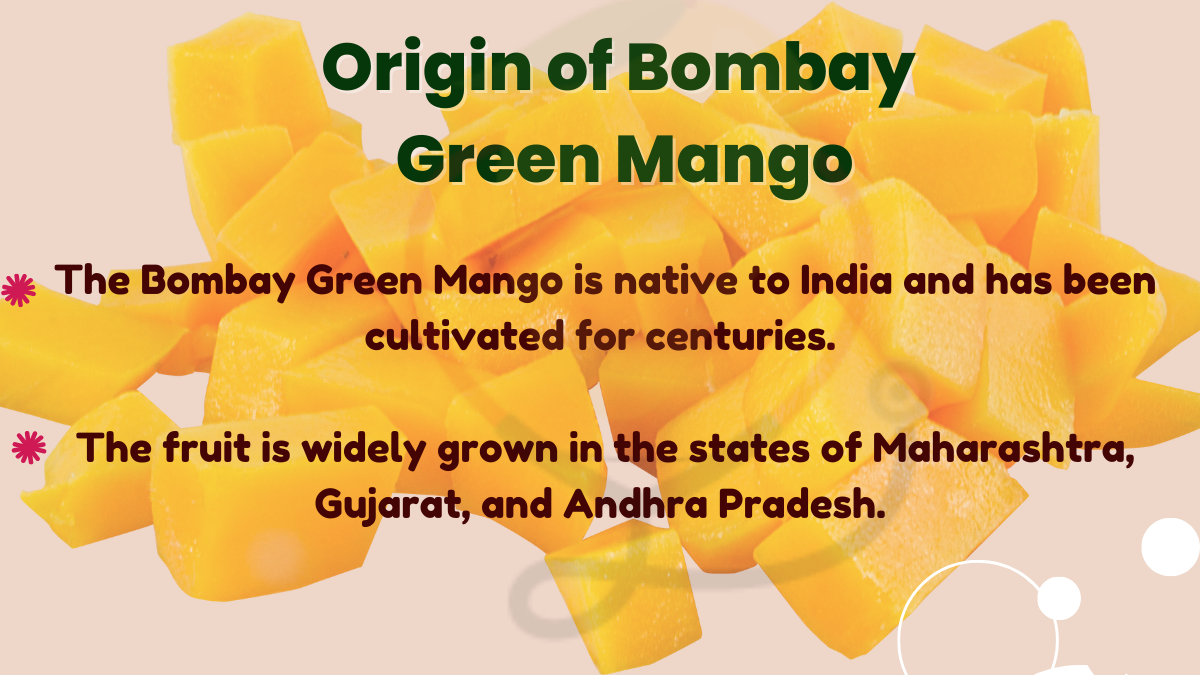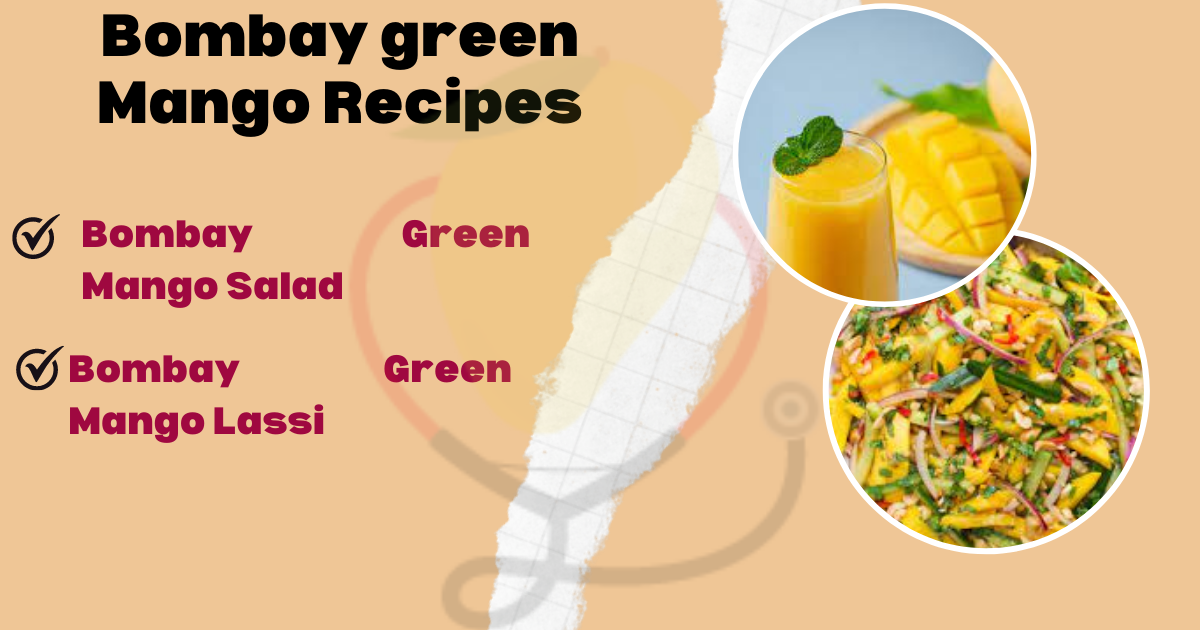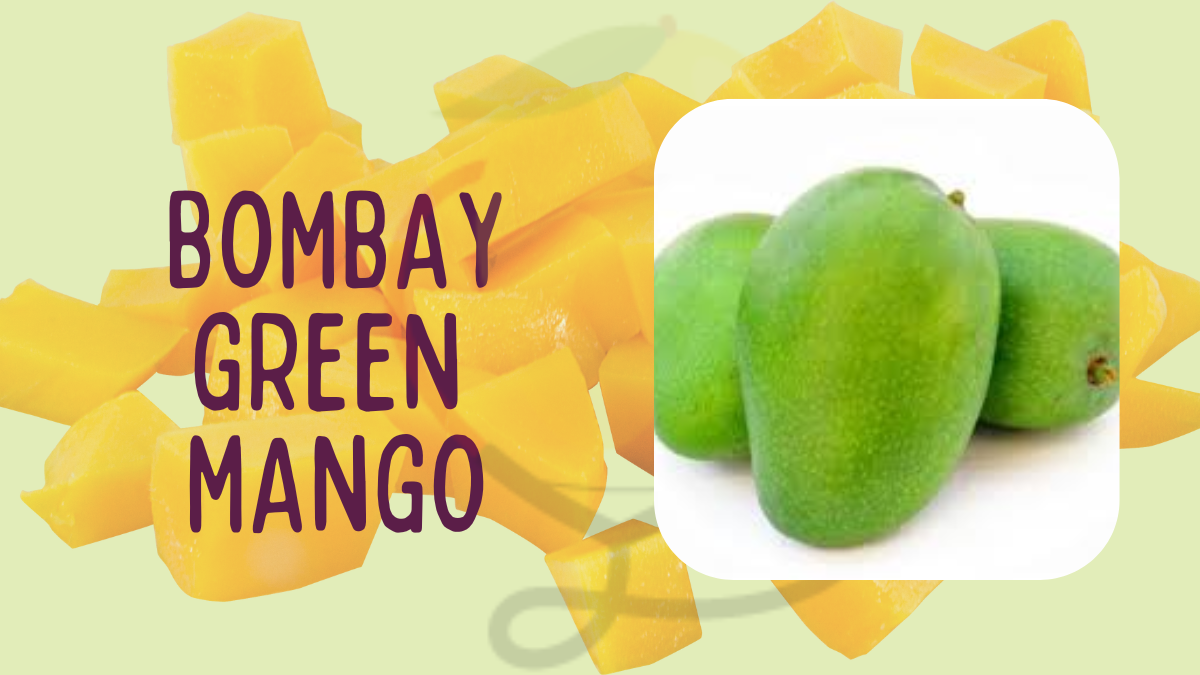Bombay Green Mango is a type of mango that is harvested when it is still unripe and green. [1]
It is also known as Kairi or Keri in Hindi, and it is a popular ingredient in Indian cuisine.
This mango is typically smaller than the ripe mangoes.
This juicy and tangy fruit is native to India, where it is a popular ingredient in many traditional dishes.
In this article, we will explore the many benefits of Bombay Green Mango, its culinary uses of this fruit.

Origin and Cultivation
The Bombay Green Mango is native to India and has been cultivated for centuries.
The fruit is widely grown in the states of Maharashtra, Gujarat, and Andhra Pradesh.

The fruit is harvested from April to June and is available in the market during the summer season. It’s also exported to other countries like the UK, US, and Canada.
Taste and Texture
The Bombay Green Mango has a unique sour and tangy taste that’s quite different from the sweet taste of a ripe mango.
The texture is firm and crunchy, and the flesh is light green and juicy.
The unripe fruit has a sour taste due to the presence of citric and oxalic acid, which are responsible for its tangy flavor.
Characteristics of Bombay Green Mango
Here are some characteristics of Bombay Green Mango.
Shape and size
Bombay Green Mangoes are oval-shaped and range in size from small to medium, usually measuring between 2-4 inches in length.
Color
As the name suggests, these mangoes are green in color, with some variations ranging from light green to dark green.
Texture
The flesh of a Bombay Green Mango is firm and crunchy, with a stringy texture similar to that of an unripe papaya.
Flavor
The flavor of a Bombay Green Mango is tangy and slightly sour, with a hint of sweetness.
It has a unique flavor that is distinct from other varieties of mango.
Ripening
These mangoes are usually consumed while still unripe, when they are still firm and green.
They can be left to ripen to a yellowish-green color, at which point they become sweeter and softer in texture.
Availability
Bombay Green Mangoes are typically available during the summer months, from May to August.
Uses
These mangoes are commonly used in Indian cuisine to add flavor and texture to a variety of dishes, such as salads, chutneys, and pickles.
They can also be eaten raw, either on their own or with a sprinkle of salt and chili powder.
Health Benefits of Bombay Green Mango
Bombay Green Mangoes also provide several health benefits. Here are some of the key health benefits of the fruit.

1: Boosts Immunity
The high Vitamin C content of the fruit helps boost immunity and protect against infections. [2]
It also helps reduce inflammation and promote wound healing.
2: Improves Digestion
The high fiber content of the fruit helps improve digestion and prevent constipation. [3]
It also helps reduce the risk of colon cancer and other digestive disorders.
3: Regulates Cholesterol
The fruit is rich in pectin, which helps regulate cholesterol levels and reduce the risk of heart disease. [4]
It also helps reduce the absorption of dietary fat and promote weight loss.
4: Fights Heat Stroke
During the summer season, Bombay Green Mangoes is an excellent way to beat the heat. [5]
The fruit has a cooling effect on the body and can help prevent heat stroke.
It also helps regulate body temperature and keep you hydrated.
Culinary Uses
Bombay Green Mangoes are used in various culinary dishes in Indian cuisine. Here are some of the most popular ways to use the fruit:
Pickles
The most common use of the fruit is in making pickles. The unripe mangoes are sliced and mixed with spices and salt to make a tangy and spicy pickle that can be enjoyed with various meals.
Chutneys
The fruit is also used in making chutneys, which are condiments that are served with snacks and meals.
The chutney is made by blending the mangoes with spices and herbs to create a sweet and tangy sauce.
Salads
The fruit can also be used in salads to add a tangy flavor to the dish.
It can be sliced and added to a vegetable salad or mixed with onions and tomatoes to create a refreshing summer salad.
Drinks
The fruit can also be used to make refreshing drinks like Mango Lassi, which is a popular yogurt-based drink in India.
The fruit is blended with yogurt, sugar, and ice to create a delicious and healthy drink.
Popular Recipes of Bombay Green Mango
Here are two recipes featuring Bombay Green Mango.

- Bombay Green Mango Salad Recipe
- Bombay Green Mango Lassi Recipe
Bombay Green Mango is a delicious and nutritious fruit that is well worth trying.
Whether you enjoy it in chutney, pickles, or salads, this tangy and refreshing fruit is sure to add a unique flavor to your dishes.
So the next time you come across a green mango at your local market, don’t hesitate to give it a try.
FAQs
Is Bombay Green Mango available year-round?
No, Bombay Green Mango is a seasonal fruit that is typically available from April to June.
Can I eat green mango raw?
Yes, green mango can be eaten raw, although its sour taste may not be to everyone likes.
Is Bombay Green Mango a good source of fiber?
Yes, Bombay Green Mango a good source of fiber.
Can I eat Bombay Green Mangoes raw?
Yes, Bombay Green Mangoes can be eaten raw or cooked in various dishes.
Is Bombay Green Mangoes high in sugar?
No, Bombay Green Mangoes are low in sugar and are a good source of fiber and other essential nutrients.
Can eating too much Bombay Green Mangoes cause diarrhea?
Yes, consuming too much of the fruit can cause digestive problems like diarrhea and stomach pain.

